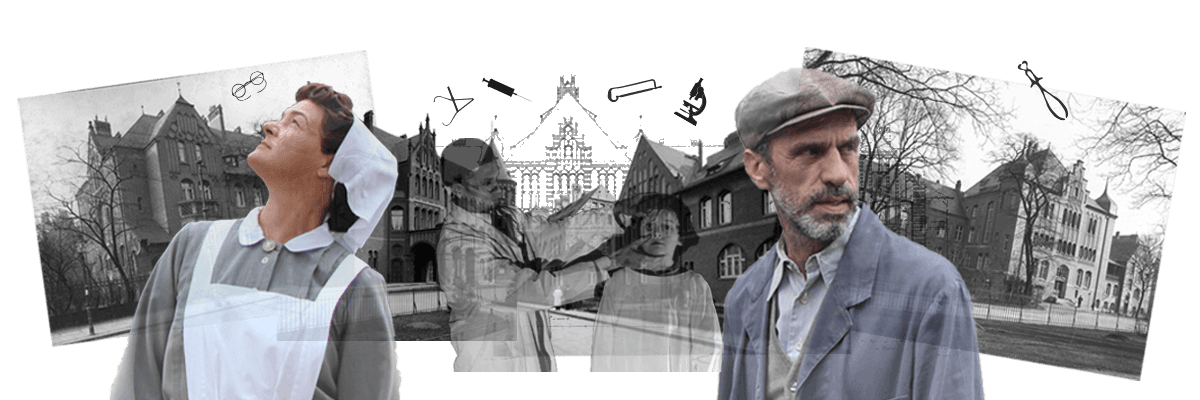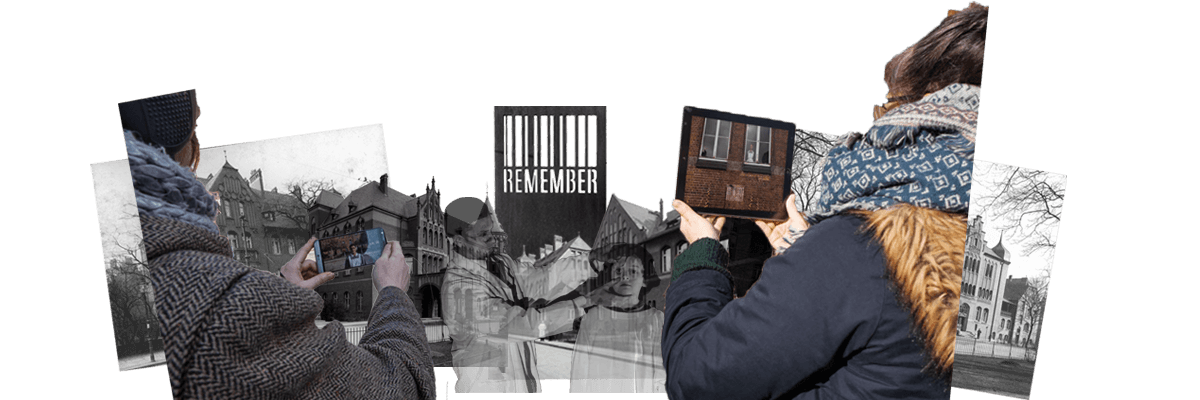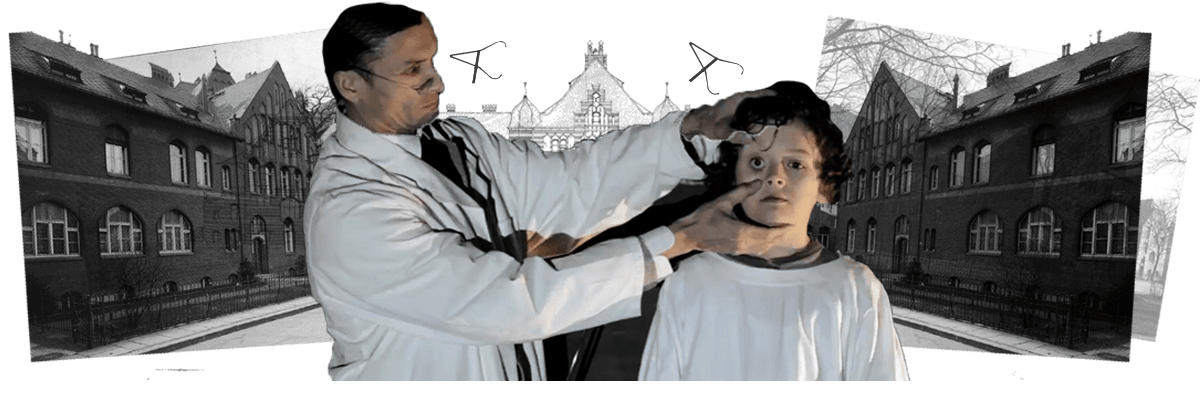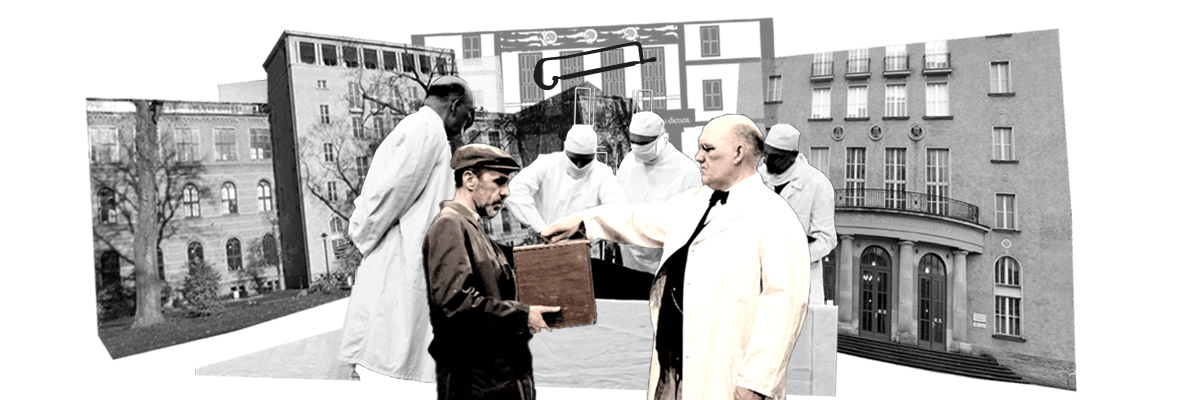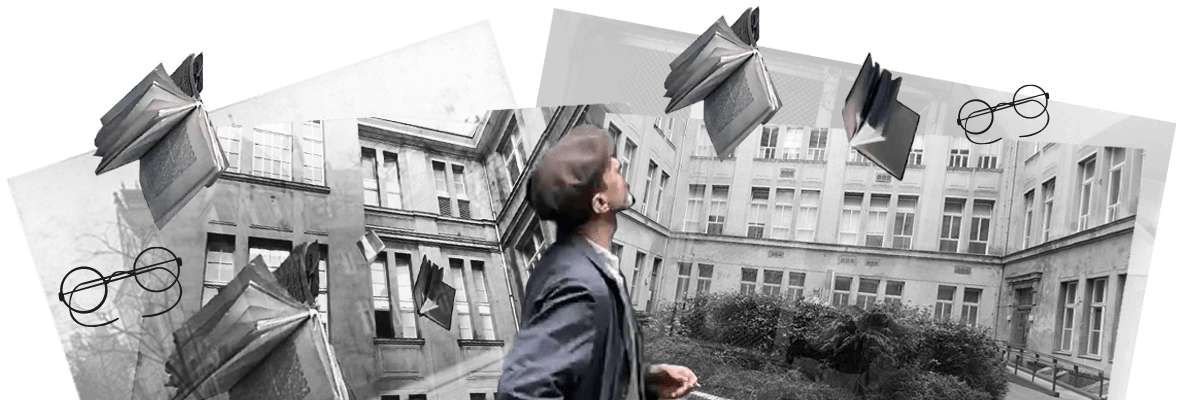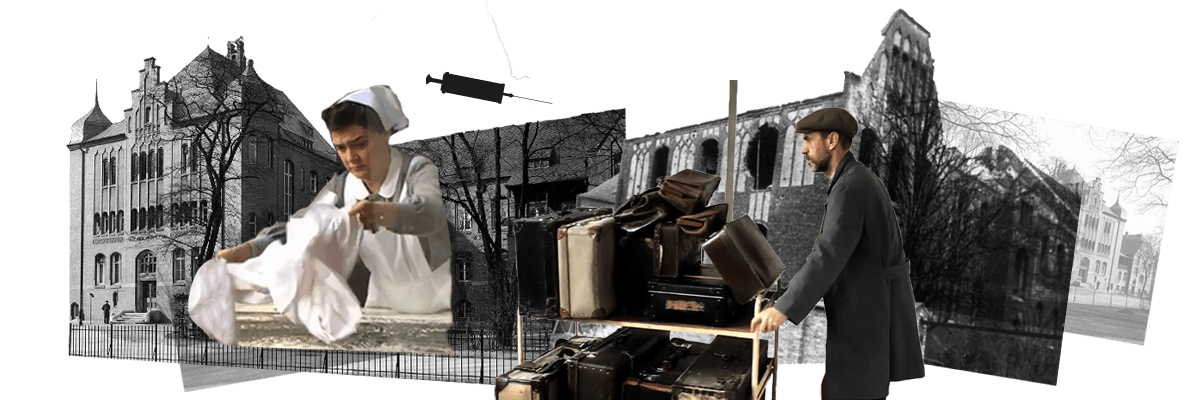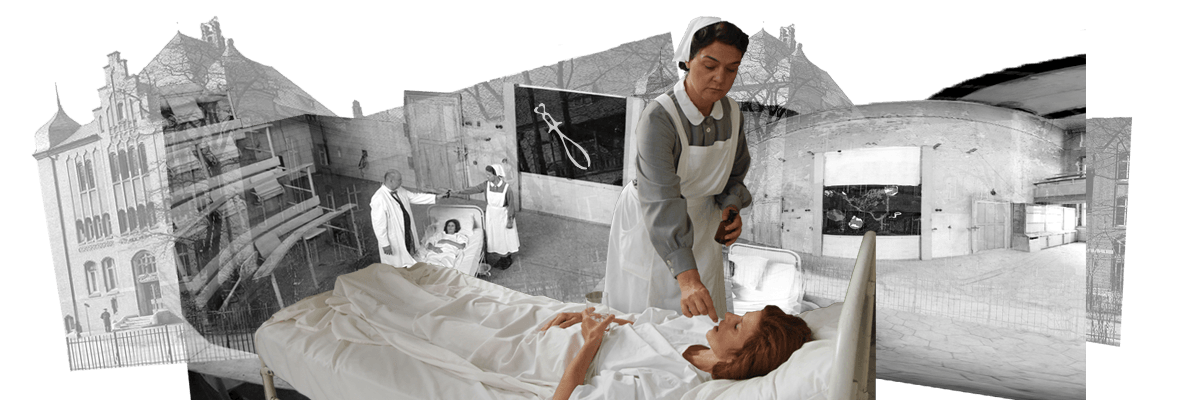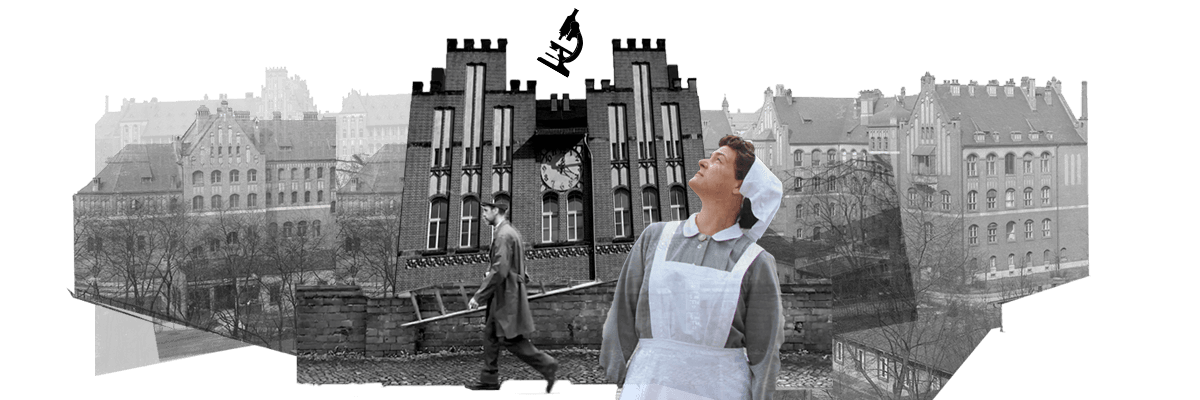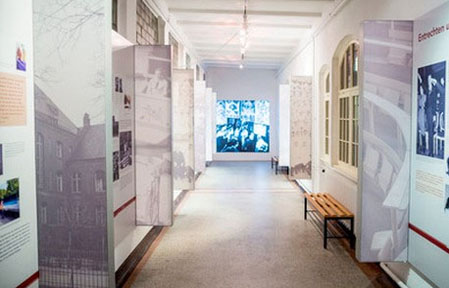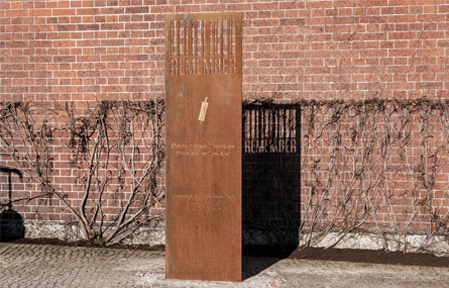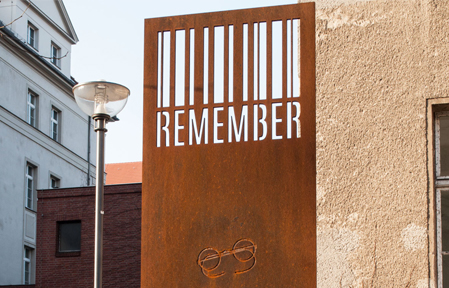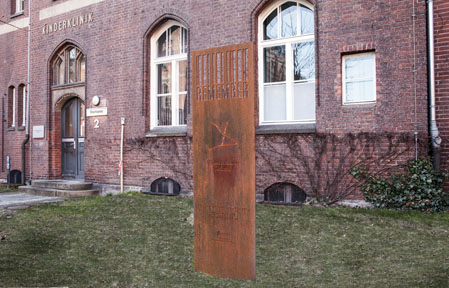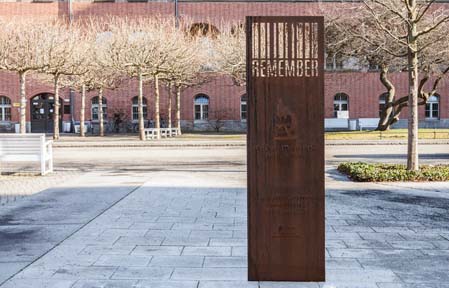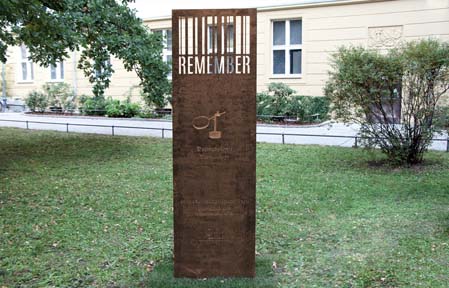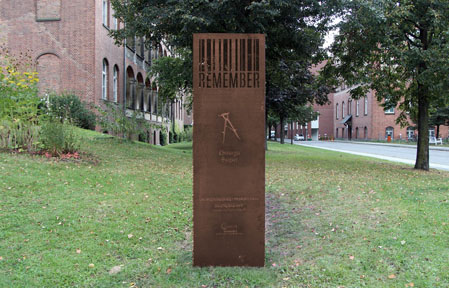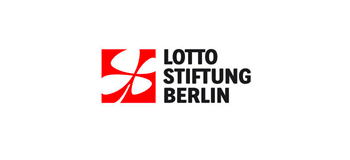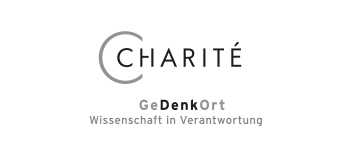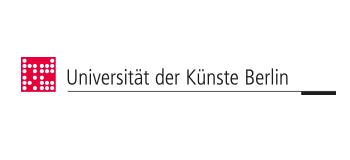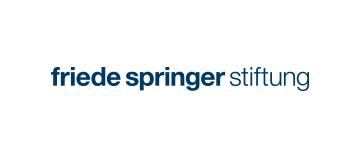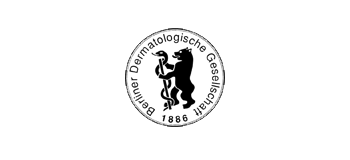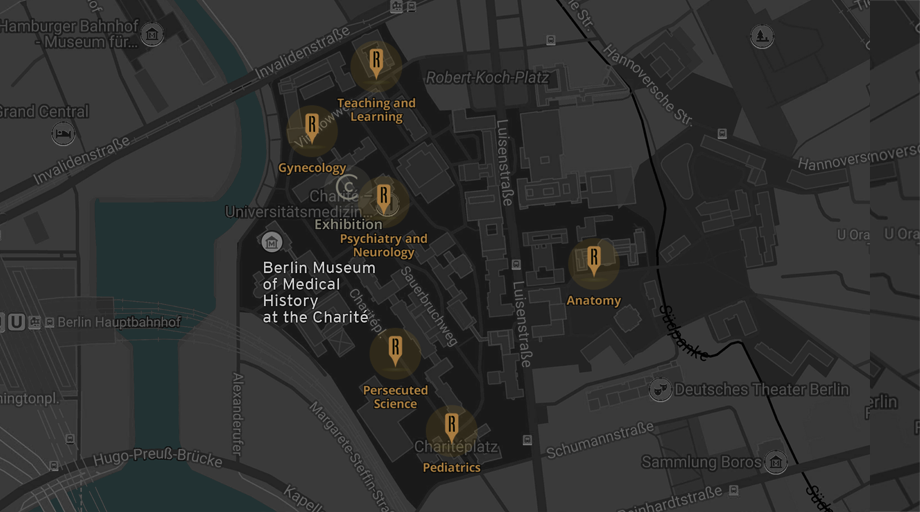GeDenkOrt.Charité – Science and Social Responsibility
GeDenkOrt.Charité is an interdisciplinary working group of the Institute for the History of Medicine, the Berlin University of Art, and the Berlin Medical Historical Museum.
Die Charité – Universitätsmedizin Berlin aims to be an example of human science that takes responsibility. Through GeDenkOrt.Charité, a site of reflection and information has been created on the historic campus of the Charité in Berlin-Mitte.
The project GeDenkOrt.Charité – Science and Social Responsibility has the following goals:
- History: at the authentic site, to convey information about events and contexts that attest to the massive failure of medicine (during the NS regime) with respect to “science taking responsibility”.
- Present: to remind a national and international public of the the importance of “science taking responsibility”.
- Future: to foster a creative and innovative confrontation between students and young doctors concerning the potential danger zones of “science taking responsibility”.
- Exhibition: “The beginning was a subtle displacement of the fundamental approach of doctors”:
The Charité during National Socialism and the dangers of modern medicine
The REMEMBER memorial path is an artistic contribution to this project.
Further information about the project and events can be found on the website.
REMEMBER ARTIST GROUP
Sharon Paz, Jürgen Salzmann and Karl-Heinz Stenz have collaborated in different national and international projects since 2005. These projects range from Video Art to Live Art and Site Specific performances.
For REMEMBER they also invited their longtime colleague Danielle Ana Füglistaller into the artist group.They all share a strong interest in political and social topics.
SHARON PAZ
"My inspiration comes from the space around me - I live in Berlin now, where the historical layers are still very present. I work on the border between public and private, I am drawn to images that represent conflict situations and create absurd situations. My projects tell a story that is visual, non-linear and fragmented. In the current project I am interested in creating links between the past and the present and using technology to produce visual interactive events.”
SHARON PAZ (* 1969 in Ramat Gan/IL) lives in Berlin. She graduated with an MFA from Hunter College, New York. She has exhibited her works at the Kunstmuseum Weserburg, Bremen, at Smack Mellon in New York City, the Herzlyia Museum of Art and the Petach-Tikva Museum of Art in Israel. Her performances were shown in DOCK11, Sophiensaele, Berlin, FFT Düsseldorf, Studiobühneköln and Akko Festival, Israel. Her projects have been supported by the Senate Department of Culture, Berlin, Capital Cultural Fund, Berlin, The Israeli Fund for Video Art and Experimental Cinema, CCA Tel-Aviv and Goethe-Institut in Tel Aviv. Her video works are featured in the collections of the Neuer Berliner Kunstverein (Video Forum) and the Israel Museum in Jerusalem, and have been screened in numerous festivals and galleries such as the Thomas Erben Gallery,the Art in General in NYC and Transmediale 11 in Berlin.
www.sharonpaz.com
JÜRGEN SALZMANN
„I am touched by the destinies that we came across. Maybe our art will help to keep the memory of those people alive.“
JÜRGEN SALZMANN (* 1963 in Stuttgart/DE) lives in Berlin. He is a video artist, director and performer. After completing a degree in biology (focus behavioral research), he concentrated his studies on applied cultural science (focus theatre and film). His activities range from Off-Theatre, Live Art to dance- and opera productions. In his work he focuses on the artistic exchange in an open dialogue, for instance in projects with refugees or contemporary witnesses of German history. He is one of the founding members of the Live Art and performance collectives cultura, Stockholm Syndrom, A.I.M.Komplex and was invited to several festivals, e.g in Israel and Greece. In workshops he shares his experience with students and teachers, including at the UdK Berlin and the HBK Brunswick. Selection of productions: Kinder des Olymp (Staatstheater Oldenburg) / Nichts. Was im Leben wichtig ist (Schauspielhaus Hamburg) / Das Märchen (Operahouse Lisbon, with Karl-Heinz Stenz) / Waldbewohner & Suns of the desert (Theaterwerkstatt Hanover) / Marks of Existence (Mamuta Art Gallery Jerusalem, with Sharon Paz) / Humans+ (fensterzurstadt, Hanover) / Parababette (Angelhaus-Production, Zurich) / BodyRealities (Din A13, Cologne) / Schädel X (Flinnworks, Berlin)
www.theatervideokunst.de
KARL-HEINZ STENZ
“Immanuel Kant’s claim ‘The: I think must be able to accompany all my ideas’ has been a consistent influence on my work. To remember that knowledge is only the acceptance of something as true can be warning and incentive at once. For that reason, the zeal with which the Nazi regime set out to trivialize, to misrepresent, and to conceal the crimes of which it was surely aware shocks me even more: to see how few discursive stances suffice to pervert such an altruistic discipline as medicine.”
KARL-HEINZ STENZ (* 1969 in Fürth/DE) lives in Mannheim. He completed a degree in cultural studies at the University of Hildesheim and works as a theater practitioner, video artist, and performer. Stenz develops primarily participatory theater performances, of which he is author, media designer, and actor. He also works on theater and opera productions in Germany and abroad, and teaches “Media in Theater.”
CREDITS
Idea, Development and Realization:
Sharon Paz
Jürgen Salzmann
Karl-Heinz Stenz
und Danielle Ana Füglistaller
In cooperation with the Project Group „GeDenkOrt.Charité – Science and Social Responsibility“:
Prof. Dr. Thomas Beddies, Institut für Geschichte der Medizin und Ethik in der Medizin, Charité
Dr. Gerda Fabert, Verwaltung Vorstand, Projektgruppe, Charité
Dr. Lisa Glauer, Projektteam, Universität der Künste Berlin
Dr. Benjamin Kuntz, Projektteam, Charité
Dr. Judith Hahn, Projektteam, Charité
Laura Hottenrott, Projektteam, Charité
Prof. Wolfgang Knapp, Institut für Kunst im Kontext, Universität der Künste Berlin
Lea Münch, Fachschaftsinitiative Medizin, Charité
Prof. Dr. Heinz-Peter Schmiedebach, Stiftungsgastprofessor für Medical Humanities, Charité
Malte Schmieding, Fachschaftsinitiative Medizin, Charité
Prof. Dr. Thomas Schnalke, Berliner Medizinhistorisches Museum der Charité
Rachel Seeling, Verwaltung Vorstand, Charité
Video Production:
Directing, Camera, Post-Production: Sharon Paz, Jürgen Salzmann, Karl-Heinz Stenz
Music: Tobias Vethake
Make-up Artists: Sophia Deubel, Yvonne Joseph, Mark Rieke
Costume Designer: Marie Heitzinger
Production Assistant: Camilla Milena Fehér
Actors:
Danielle Ana Füglistaller – Nurse
Karl-Heinz Stenz – Caretaker
Matthias Alber
Elke Cybulski
Paul DeBlois
Camilla Milena Fehér
Marie Heitzinger
Carsten Hentrich
Andreas A. Müller
Lajosh M. Müller
Alexandra Paul
Sharon Paz
Jürgen Salzmann
Heino Sellhorn
Sabine Trötschel
Willy
Voices:
Danielle Ana Füglistaller
r
Ralph Grawe
Carsten Hentrich
Konradin Kunze
Andreas A. Müller
Ruth Rosenfeld
Jürgen Salzmann
Karl-Heinz Stenz
Sigurd Ulrich
Memorial Sculpture Production:
Architect: Ute Schimmelpfennig
Static Calculations: Florian Merkle, Ingenieurbüro Rüdiger Jockwer GmbH
Production Consultant: George Zey
Graphic Consultant: Delia Keller
Laser Cut: Ferrum Lasercut GmbH, Andreas Gabrielczyk
Engraving: Gravieranstalt Josef Jegel, Bernd Reiß
Fundament Construction: Ed. Züblin AG, Erik Teute
Assembly: LIBOH GmbH, Johannes Klaas
Web and App Production:
App Developer iOS: Ivo Wessel
App Developer Android: Mobilinga GmbH
Web and App Design: Andrew Fynecontry-de Bana
Web Developer: gravity&storm
Text:
Prof. Dr. Thomas Beddies
Astrid Hackel
Matthias Reichelt
Jürgen Salzmann
Dr. Udo Schagen
Prof. Dr. Heinz-Peter Schmiedebach
Karl-Heinz Stenz
English Translation: Sylee Gore, Kristie Kachler
English Proof reading: Jakob McKernan
German Proof reading: Tina Wessel
Photographer: Petra Spielhagen
Photo Model:
Stephanie Hanna
Adi Liraz
Kornél Szilágyi
Jens Willke
Image and sound rights:
Deutsches Radio Archiv
Evangelisches Diakoniewerk e.V.
Institut für Geschichte der Medizin und Ethik in der Medizin, Charité Berlin
Minotaur International Ltd.
Charité-Team:
IT:
Katja Barnikow
Juliane Marx
Ronny Vorpahl
Press and Central Media Services:
Kerstin Sauer und Sandra Otzen
Wiebke Peitz
Claudia Suckow
Christine Voigts
Verena Wolff
Administration and secretariat:
Stefanie Voth
Britt Anders and Ursula Wünderlich
Petra Radde
Cornelia Glinsky
Matthias von Ostrowski
Technology and Operations Department of Charité and Charité Facility Management GmbH:
Sven Bremer
Jochen Brinkmann
Beatrice Günther
Birgit Heuer
Katharina Heuer
Birgit Hoppe
Beate Möllers
Sorina Olteanu-Schmidt
Andreas Schmitz
Marcus Tielesch
Gratitude to
Thanks to the initiators, the selection committee members and the experts:
Prof. Dr. Karl Max Einhäupl, former CEO of Charité – Universitätsmedizin Berlin
Prof. Martin Rennert, President of Berlin University of the Arts
Prof. Dr. Bernd Dörken, Charité
Prof. Dr. Eckart Köttgen, Charité
Prof. Dr. Jürgen E. Zöllner, Stiftung Charité
Prof. Dr. Thomas Beddies, Charité
Prof. Wolfgang Knapp, Berlin University of the Arts
Prof. Dr. Thomas Schnalke, Berlin Museum of Medical History at the Charité
Rajkamal Kahlon, Artist, Berlin
Sibylle Kufus, Head of Education, Management C/O Berlin Friends e.V.
Dr. Astrid Ley, Memorial and Museum Sachsenhausen
Dr. Naomi Tereza Salmon, Bauhaus-Universität Weimar
André Schmitz, Schwarzkopf, Young Europe Foundation
Prof. Ulrich Schwarz, Berlin University of the Arts
Prof. Dr. Heinz-Peter Schmiedebach, Charité
María Linares, Artist, Berlin
Prof. Dr. Petra Fuchs, College Zittau/Görlitz
Thomas Gusenburger, Neumann Gusenburger Landscape Architects
Prof. Dr. Adelheid Kuhlmey, Charité
Lea Münch, Medical Students Representatives, Charité
Dr. David Naegler, Charité
Malte Schmieding, Student Charité
Sorina Olteanu-Schmidt, Charité
Theresa Ostertag, Stiftung Charité
Special Thanks:
Mark Rieke, mr* Hair & Make Up Studio, Berlin
Mimi, Textile Antique, Berlin
Jan Gerigk, ZKM | Center for Art and Media, Karlsruhe
Bernd Lintermann, ZKM | Center for Art and Media, Karlsruhe
Prof. Dr. Stephan Günzel
Dr. Zohar Efroni
Beate Kunst, Berlin Museum of Medical History at the Charité
Sabine Ernst and Petra Bergström, Monument Protection Department, Mitte district, Berlin
Christian Möller, INVR.SPACE GmbH, Berlin
Domino Films, Herefordshire („Selling murder – The Killing Films of the Third Reich“)
Theaterwerkstatt Hannover
Medienwerkstatt im Kulturwerk des bbk berlin
Kulturfabrik Moabit
Freunde und Förderer der Berliner Charité e.V.
Berliner Dermatologische Gesellschaft
Dr. Isabelle Haupert
Petra Haupert
Wolfgang Chodan, Werbefotografie Chodan
Sandra Miriam Schneider
Amnon Liberman
Dörte Dennemann
Annekatrin Dennemann
Lawrence Haddaway
Caroline Füglistaller-Flower
Tami Elinav
Hans Hemmert
Roland Kirsch
Brigitte Bundschuh
Bernd Nanninga
Prof. Dr. Ulrike Blume-Peytavi
The project was made possible thanks to the support from:
Lotto Stiftung Berlin
Friede Springer Stiftung
Freundeskreis Charité e. V.
Dedicated to all the patients, employees and scientists from the Charité,
who were victims of the Charité involvement in the National Socialist injustice system.

